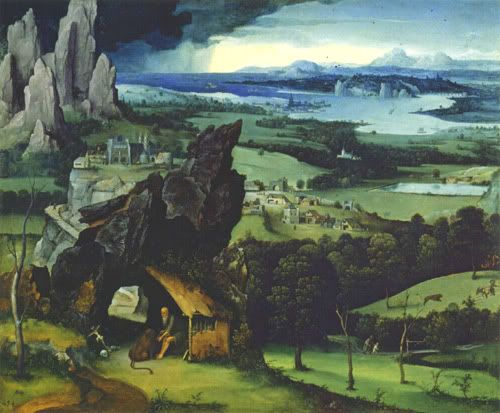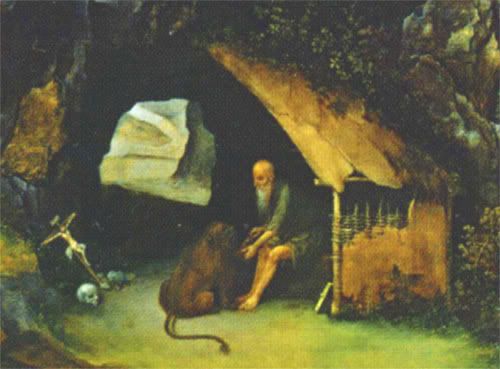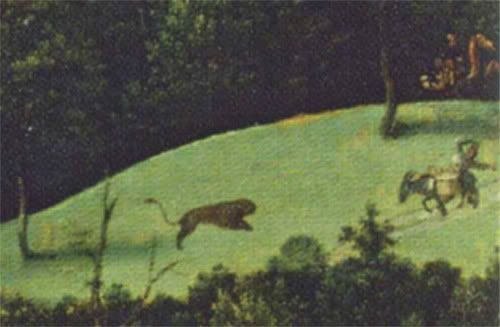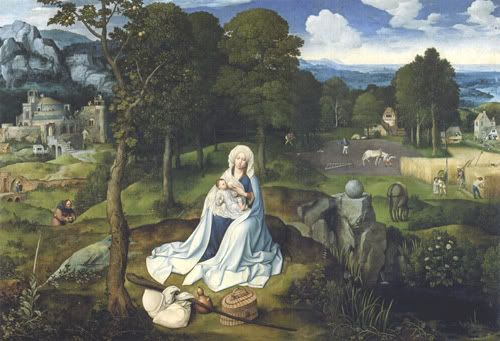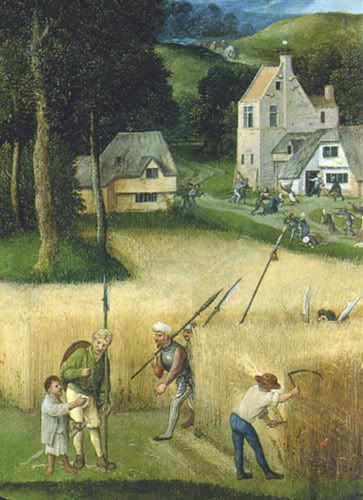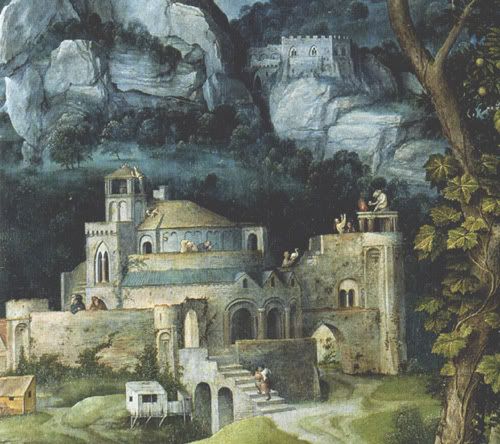Yesterday, to commemorate German Unity Day, my sister and I went on an excursion to the Reichstag. Rather than take the bus, we walked all the way there and all the way back. We live relatively close to Potsdamer Platz (I suppose), so it wasn't unreasonable to walk (I suppose).
We began by going along the Hauptstraße and the Potsdamer Straße to the Kulturforum. Along the way, we passed U-Bahnhof Bülowstraße, which is (unlike most U-Bahn stations) above ground. I have always liked the architecture of U-Bahnhof Bülowstraße. In my view, the combination of glass, metal, and stone is tasteful and pleasing to the eye. I would have taken a photo of the station earlier, but, since I always took the bus, I kept missing the opportunity.

The following photo was taken just before crossing the Landwehrkanal. The Staatsbibliothek and the Sony Center are in view. You can even see the blurry dome of the Reichstagsgebäude off in the distance (about at the vanishing point, I think).

We rested for a while at the Kulturforum, where I took several photos. The first two shown below depict the St. Matthäuskirche (from the Kulturforum side and from the Staatsbibliothek side). I guess I made the second one too dark after all, but I've already uploaded it, so I don't want to bother changing it now. Besides, I don't particularly mind the photo as it is, even if the church tower blends into the clouds.
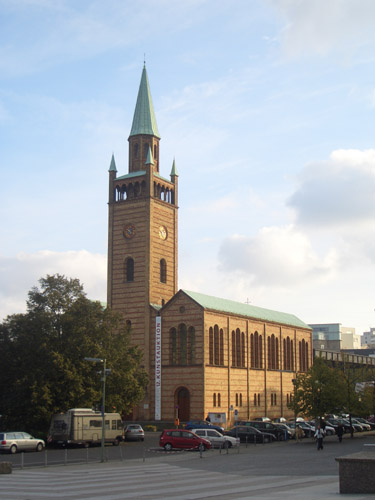

The next photo (of the Philharmonie) was taken because the scene -- especially the trees to the left of the Philharmonie -- had such a Canadian air. The yellow of the building also has a warm luminous quality.
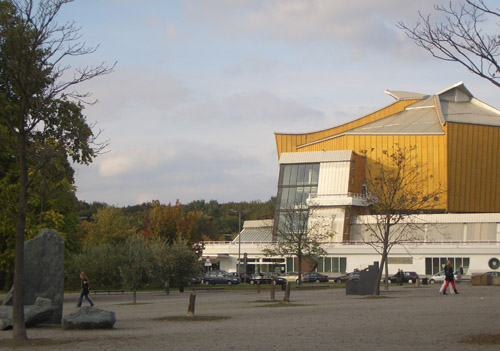
In the following photo, you can see (for example) the Sony Center, the Deutsche Bahn skyscraper (located right at Potsdamer Platz), and the "Die Welt" hot-air balloon. If the Philharmonie were in the photo, it would be just to the left of the Sony Center.

The last Kulturforum photo is of the Staatsbibliothek (Haus Potsdamer Straße). Note the jagged, factory-like roof and the shiny scaffolding.
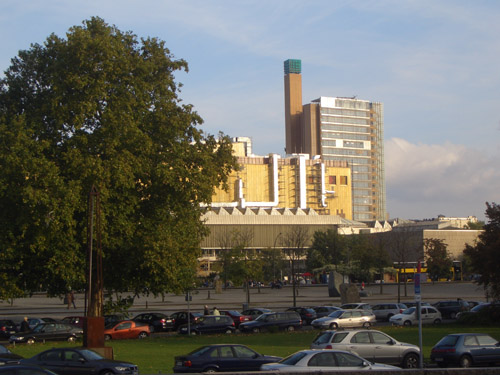
Having rested, we decided to take a shortcut by passing to the left of the Philharmonie (rather than to the right). We soon came across wandering crowds that were clearly there for the German Unity Day festivities. We followed the crowds through the Tiergarten -- a pleasant route, though a bit of a detour.
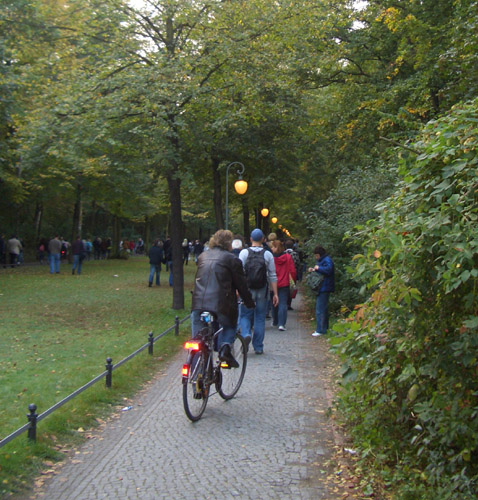
What with the birch trees, the delicate green and yellow foliage, and the soft golden winter-cherry lanterns, I found the surroundings decidedly fairy-like (despite the aforementioned unfairy-like wandering crowds). The combination of the lanterns, the cobblestone path, the lawn, and the low metal railing was also somewhat reminiscent of late nineteenth-century England (specifically, the parks, gas lights, and narrow streets of London).
After exiting the Tiergarten, we came to a road lined with booths, where such things as waffles, crêpes, Bratwurst, gebrannte Mandeln (roasted, sugary almonds), garlic baguettes, Chinese food, cotton candy, clothing, jewellery, and handicrafts could be bought. The booths were interrupted periodically by huge screens, which were broadcasting a nearby live concert. The accompanying loudspeakers projected a booming that could be heard as far away as the Kulturforum. Rather headache-inducing, as were the crowds. Still, it wasn't entirely unpleasant to weave through the people, searching for the Reichstag, as well as a crêpe and a sausage for me, and some cotton candy for my sister.
I found myself a crêpe with apple sauce soon enough, but the Reichstag proved to be more elusive. We were never strictly lost, I'd say, but it took us some time to espy the familiar glass dome and stone façade. When we finally arrived at the expanse of lawn in front of the Reichstag, our shadows already stretched a goodly distance before us, and the light had acquired a warmth that fit well with the autumn colours.
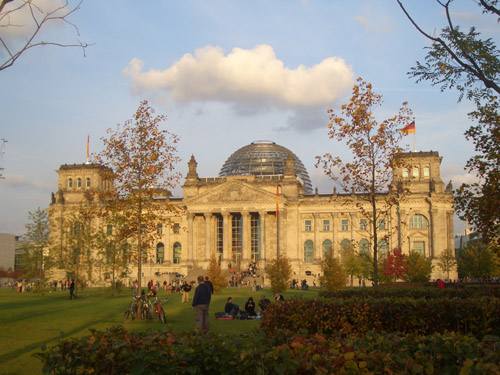
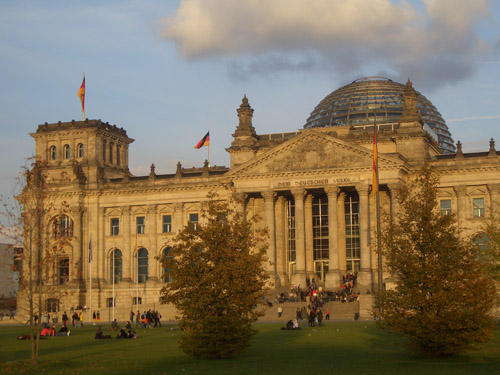
The building in the next photo is the Paul-Löbe-Haus, which is between the Kanzleramt and the Reichstag on the edge of the Platz der Republik.

It was really nice, by the way, to stand in such a wide-open space -- to be able to see the sky stretch far in every direction. Berlin in general is not a cramped city; the streets, and especially the intersections, are spacious. I think I see more sky here than I did in my wooded home in Canada.
Anyway, having reached our original goal at last, we decided to wend our way home (preferably after having bought the sausage and cotton candy). At first, we went past the Reichstag along the Scheidemannstraße, thinking to come across another row of booths on the way to the Brandenburger Tor. From what we saw from a distance, however, it seemed that the concert was all we would find in that direction. Besides, the street to the Brandenburger Tor was blocked off (i.e. we would have had to go the long way around).
As a result, we ended up walking back the way we came. Along the way, we passed a plain stone monument to the victims of the Berlin Wall (that is, a monument to the people who died trying to cross over the Berlin Wall to the West). It struck me when I first saw it, because what I initially assumed were bouquets of flowers turned out to be discarded paper cups, napkins, and other garbage that had been left on the monument. To treat the monument as a trash can was, in my opinion, thoughtless, disrespectful, and entirely inappropriate considering the occasion.
On the way back to the Kulturforum, we also passed a ferris wheel and a crane from which people could bungee jump. Part of the crane (namely, the big pole) can be seen in the following photo of the Siegessäule and the setting sun.
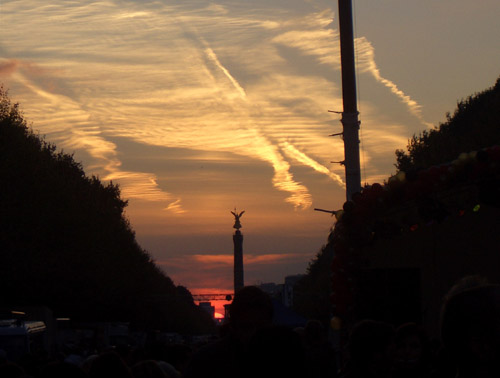
By the time we were on the Hauptstraße again, it was dark, and I
really didn't feel like walking any more. Walk we did, though, and we arrived safely home some time around 19:30 or 20:00.
Note: All of the above photos were edited using Adobe Photoshop.

